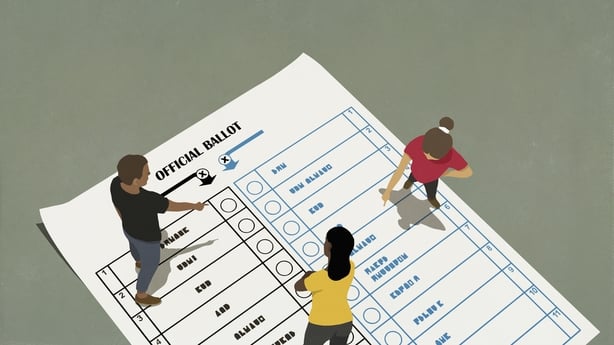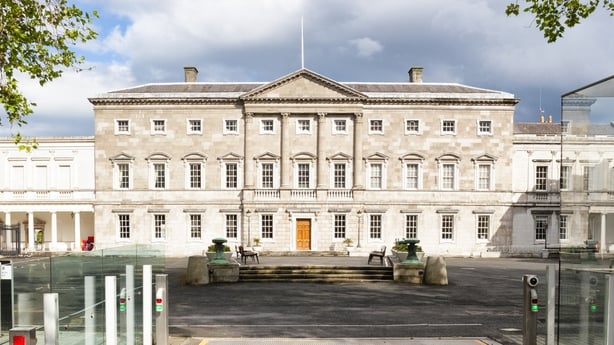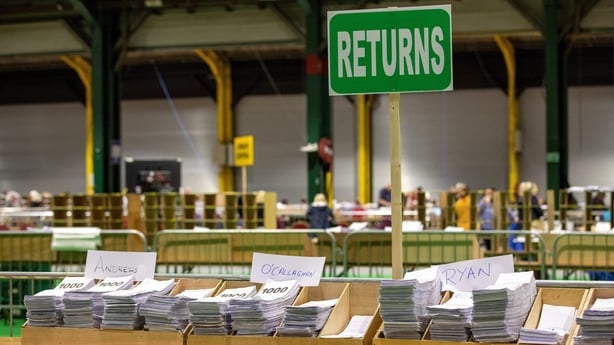Philosopher Joseph de Maistre wrote in 1811 that "every nation gets the government it deserves".
A devoted monarchist, de Maistre saw the crown and its hereditary power structure as the only stable form of administration.
In less than six weeks' time, the Electoral Commission will publish recommendations on how many TDs Ireland should have after the next election, as well as the makeup of the individual constituencies that elect them.
It's a mammoth piece of work and forms the cornerstone of our parliamentary democracy.
In the words of the commission, it will represent the "most important reform of the electoral system in decades".
The report is eagerly awaited by TDs because the shape of individual constituencies, where the boundaries lie and how many seats each contains can be the difference between a flourishing or floundering political career.
The decisions contained in the report will also have far-reaching consequences for political parties and will impact future government formation, as the current majority of 81 that is needed to govern could potentially rise to 91.

After being established in February of this year, the Electoral Commission began a public consultation process. Individuals, elected representatives, political parties, academics, tallymen, community groups and other interested parties made 556 submissions.
Their work is independent of Government and is bound by the provisions of the Electoral Reform Act (2022).
Their first consideration is to take account of demographic trends. Ireland's population is at its highest level since 1841, surpassing five million people for the first time in 141 years. The latest Census figures show an 8% increase since 2016.
How many TDs do we need
The commission has been given the latitude to create between 11 and 21 additional seats. This would bring the 34th Dáil to between 171 and 181 TDs.
Each constituency is reviewed in line with the constitutional criteria of one TD per 20,000 - 30,000 people, as per Article 16.2.2.
Within those criteria they must also ensure that the ratio remains broadly the same across the country. This could prove problematic when it comes to preserving county boundaries.
Tim Carey of the Electoral Commission has previously characterised the process as "iterative", meaning that the number of TDs cannot be decided upon in isolation, but must be considered in tandem with the boundary changes.

Most political parties want the commission's proposals to take account of further population growth in order to avoid significant changes at every electoral cycle.
The Labour Party wants an even number of seats to be retained, recommending that 20 would suffice "certainty for the next decade on the proposed arrangement of constituencies".
For its part, Fine Gael says that "if the commission were to create more than 178 seats, the extra seats allocated at that level would be likely to give rise to even more boundary breaches in a range of counties".
It "therefore [considers that] the middle to lower upper end of your range is the most appropriate outcome", the party told the commission.
Constituency boundaries
Where possible the commission says it will try to preserve county boundaries for constituencies.
All the submissions, whether from political parties or individuals, concur with this approach.
Examples are cited where people feel "disenfranchised" and "marginalised" when they end up being part of an "add-on" to a neighbouring constituency.
Fine Gael notes that "eight constituencies include parts of (ten) neighbouring counties".
These include the likes of the Cavan-Monaghan constituency. which includes parts of Co Meath; Galway West, which contains parts of Co Mayo; and Sligo-Leitrim, which contains parts of Donegal and Roscommon.
The party argues that the commission could increase the level of variance (plus or minus 5%, as a rule of thumb) from the national average, arguing that generating constituencies with parts of adjoining counties added on, "solely for the purpose of falling within a prescribed range of variances, is inimical to the concept of Equality of Representation".

In its submission, Fianna Fáil makes the point that preserving the boundary where possible is important for "civic engagement".
"The commission should take an approach which seeks to make the boundaries less likely to require major divisions in the future," it says.
The party also suggests, where possible, using major pieces of infrastructure such as rivers, motorways and rail links as an appropriate means of drawing boundaries. This is echoed by Fine Gael, which adds that "on a case-by-case basis, community may have to override geography".
The party adds that: "Some natural communities like Castleknock or Ballinteer [in Dublin] are bisected by a motorway, and also the River Liffey divides both Lucan and Chapelizod."
Call for six-seaters
The commission can only create constituencies of three, four or five seats, a source of disappointment to Sinn Fein, Labour and People Before Profit.
There are currently nine 3-seat constituencies, 17 4-seaters and 13 5-seaters.
Sinn Féin, Labour and People Before Profit all make the case for bigger constituencies and a reduction in the number of three-seaters, which they feel favour incumbents and larger parties.
The Labour Party points out that proportional representation (PR) is designed to ensure that there are as few 'wasted’ votes as possible.
Similarly, Sinn Féin argues that the three-seat constituencies "reduce the diversity of representation that our PR-STV electoral system is designed to deliver".
"The 25% quota that prevails is a very high bar for any candidate to strive towards, and while many TDs are elected short of a quota, it disproportionately benefits incumbents and large parties," the party says.
People Before Profit claims that six-seat constituencies would add further to the proportionality of general election outcomes.
The party finds it "regrettable" that the commission cannot recommend them.
It is calling for an amendment to the Electoral Reform Act to allow this to happen in them to be recommended in the future.

East coast set to see more seats
The Census shows population increases across every county in Ireland between 2016 and 2022.
However, the areas with the highest growth are predominantly along the east coast; Longford (+14%), Meath (+13%), Fingal (+11%), Kildare (+11%), Wexford (9%) and Carlow (9%). These areas are likely to be the main beneficiaries of additional seats.
Dublin alone elects almost one third of Dáil deputies; 45 TDs across 11 constituencies, and according to the Census figures, there will have to be a commensurate increase.
Fine Gael thinks that the capital could receive anything from an extra three deputies at the lower end of the scale to a possible six.
Fianna Fáil anticipates an increase of four seats for Dublin, meaning a total of 49 deputies across city and county.
MEPs
In addition to the Dáil constituencies, the commission is also examining constituencies for the European Parliament, after it was decided that Ireland would gain an extra MEP at the next European Election in June 2024. This will give Ireland 14 MEPs.
This is one area where there appears to be a consensus emerging, with most parties arguing for the retention of the current three constituency structure comprising the South, Midlands-Northwest and Dublin, and for the Midlands Northwest Constituency to be expanded to a five-seater through the inclusion of the counties of Laois and Offaly.
This would leave Ireland South as a ten-county, five-seat constituency and leave Dublin as a single county, four-seat constituency.
The Electoral Commission is faced with the complex task of ensuring that a TD in a rural constituency such as Donegal represents broadly the same number of people as their counterpart in a more densely populated area like Dublin.
To achieve this, it will have to balance complex mathematical and geographical concerns to deliver 39 constituencies that are recognisable as "coherent and contiguous".
The report will be published on 30 August.







